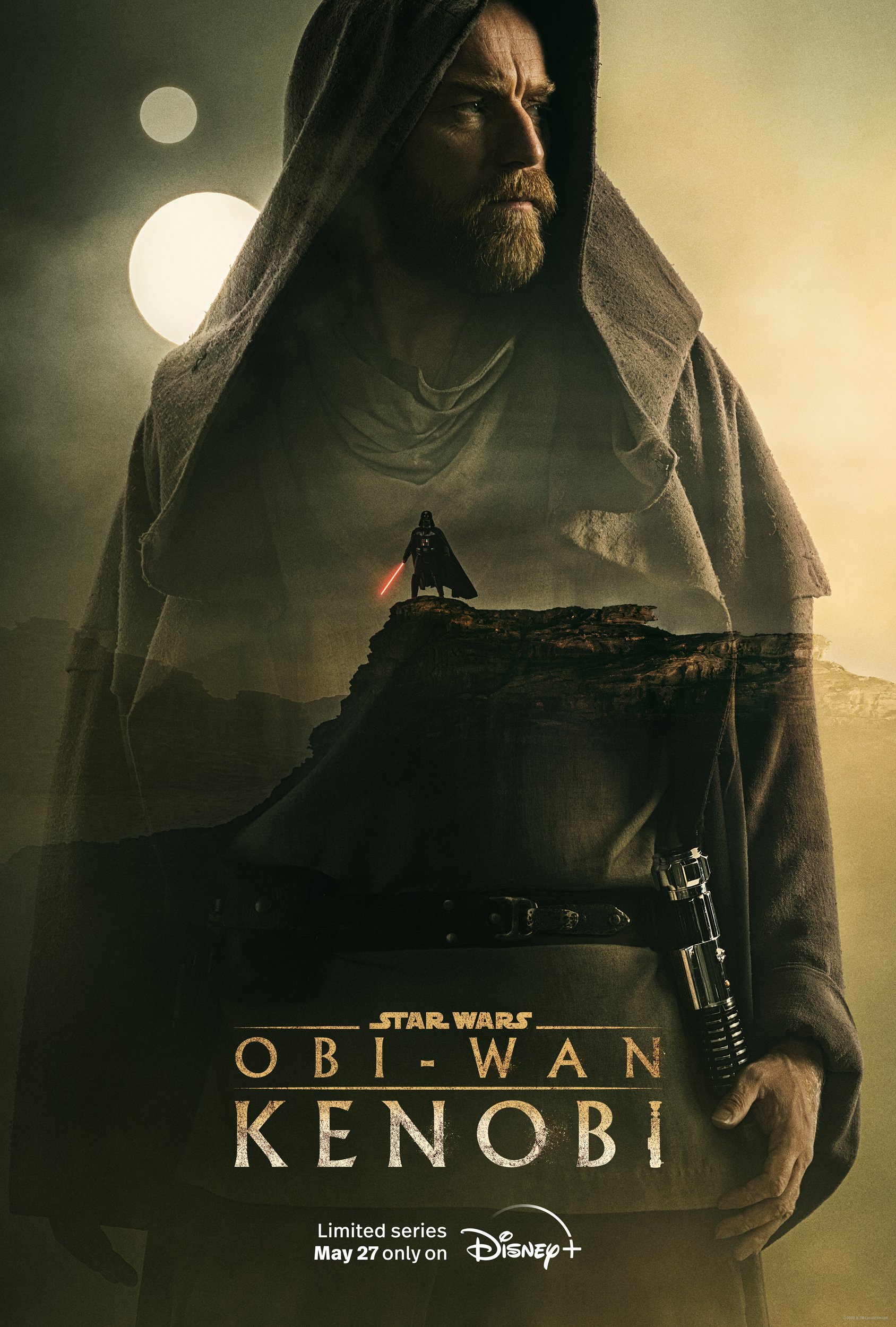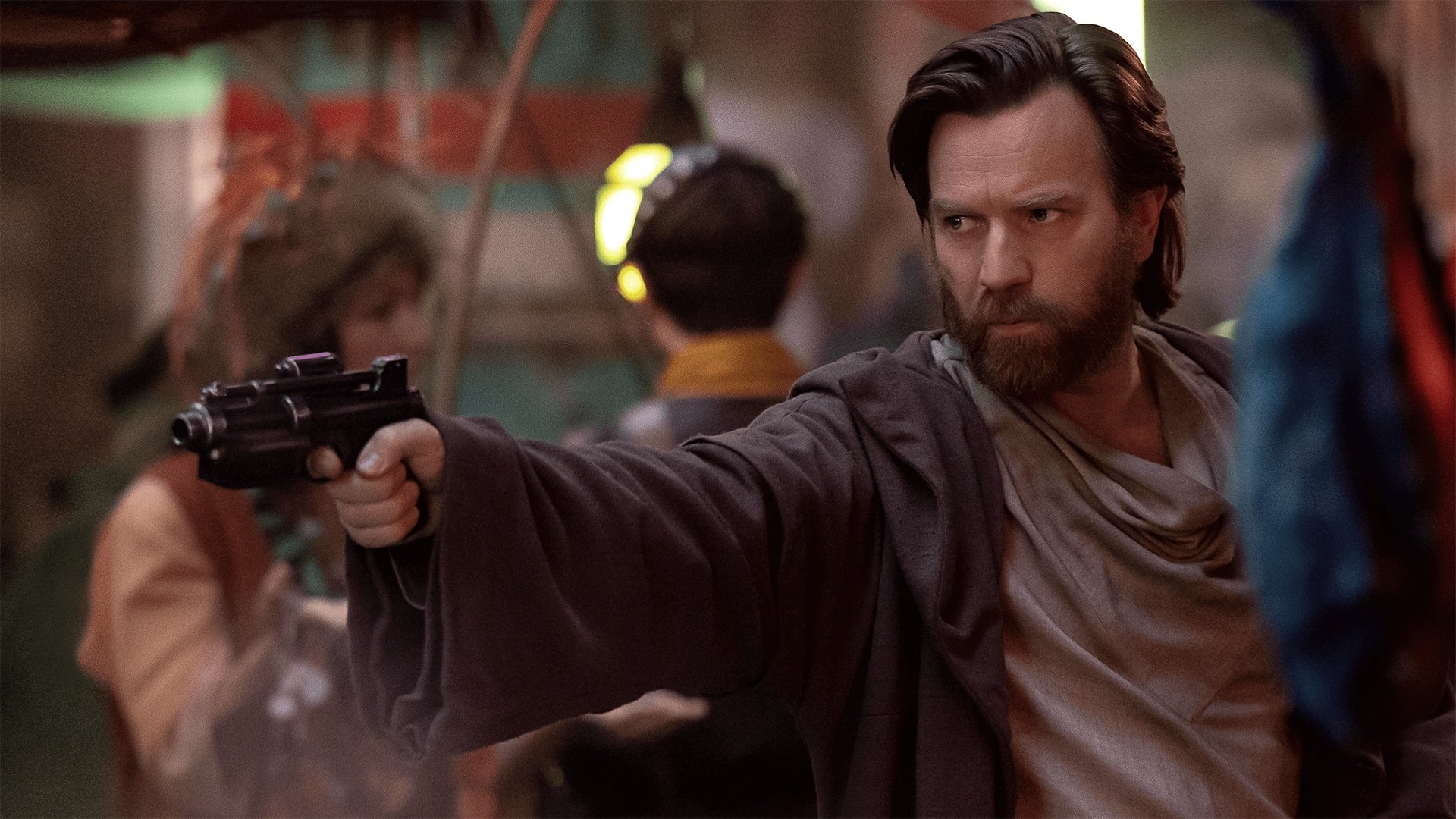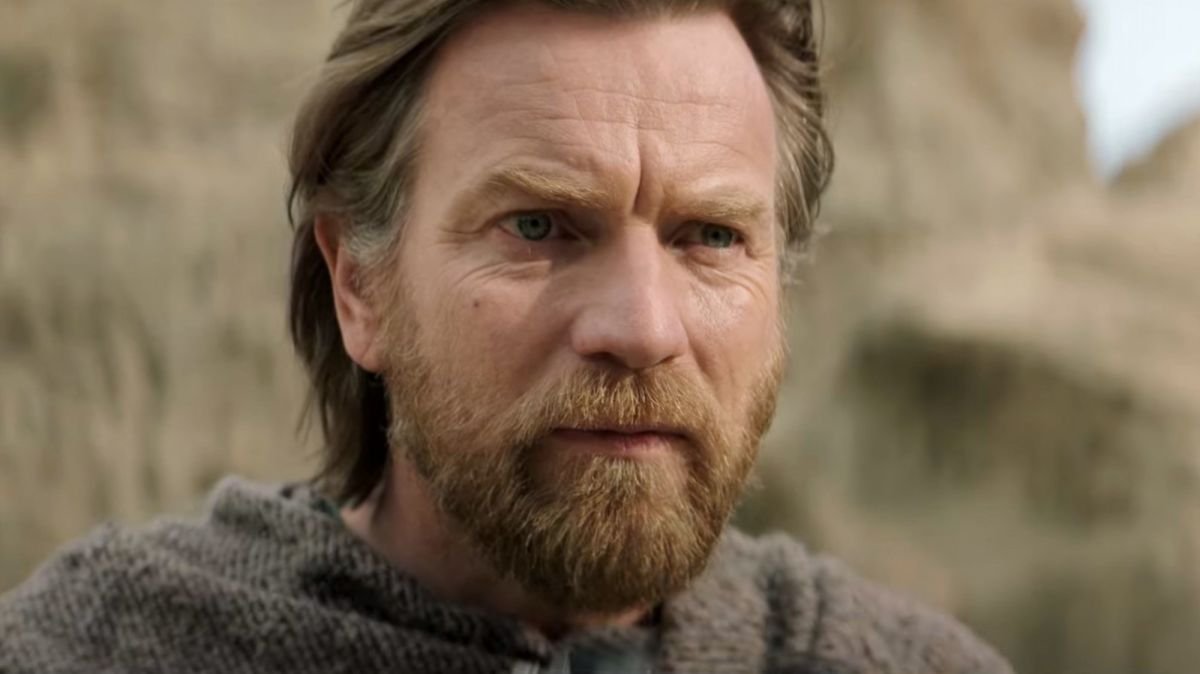Disney+’s new series has big shoes to fill and a lot of Jar Jar to make you forget
[In this article, the first two episodes of Obi-Wan Kenobi will be discussed with light, non-story-essential spoilers. Content warning: sensitive topics such as school shootings and genocide will be discussed. In the wake of recent events, I am at a loss for words to describe the tragedy that has not only befallen the families of the children and teachers killed and their community, but wounded the soul of a nation. My heart goes out to everyone touched by this senseless act of mass violence that has become too familiar in the American landscape.]
I’m tired of superheroes. I said it. MCU fatigue has finally fully settled in. After I shrugged my shoulders through the entirety of the latest increasingly-confusingly named Spider-Man film, not only did I wonder why they all had “home” in the title (Homecoming, Far From Home, No Way Home, Homeward Bound, Home Alone, Home Improvement, and Sweet Home Alabama; it gets hard to keep track of all of these), but I wondered how far we can go on sheer nostalgia. Especially if the thing I’m supposed to be nostalgic about doesn’t resonate. I never watched the Andrew Garfield Spider-Man trilogy—I wrote them off as cynical cash grab meant to hold on to the rights to the franchise. So when he showed up to a silent audience as I watched at home, I felt nothing. Nostalgia can only get you so far, right?
Far removed from his days as a Jedi and a general, Obi-Wan lives with his roommates, isolation and regret
So let’s fire up the nostalgia machine and go again, this time with Obi-Wan Kenobi, Disney+’s new series about the titular Jedi in a world devoid of Jedi. Here we see the origins of Ben Kenobi, cutting meat and watching Luke from a distance. He’s old; much older than the 10 years between Revenge of the Sith and Kenobi would have you believe. He’s sad. Everything he knew, fought for, and believed in went up in flames over the span of one radio transmission. He’s alone. Self-imposed hermitry as the Inquisitors, who are far too inquisitive, search the galaxy for the remaining Jedi and other force sensitives to either turn to the Dark Side or eradicate. Hardly a casual chat. Needless to say, we’re tuning in to a rather tough spot for the galaxy.
Old friends, new enemies
There’s a lot at stake for Kenobi. Unlike The Mandalorian, which had almost no expectations on its shoulders as it graced the screen, Kenobi comes with a lot of baggage. I know that the there’s been a push lately and opinions on the prequel trilogy have changed in recent years, but having just rewatched them as recently as last week, I can only place them in the category of bad movies I enjoy watching. The writing is stiff, the acting is stiffer, and the visuals rely far too heavily on green screen and CGI. There’s a lot frustrating things about the prequel trilogy (including the treatment of Padme in Revenge; especially after seeing how headstrong and badass she is in The Clone Wars series, ROTS-era Padme was a huge disappointment), but much of it has to happen for us to get the story we had in the original trilogy. So I can’t be too nitpicky on the story choices, even though they often frustrate me again. Kenobi is more like The Book of Boba Fett, which aims to redeem a character, not only in the eyes of the story, but in the eyes of the audience as well. Boba Fett is one of those characters we were never honest about—I loved Boba Fett, I wanted Boba Fett’s action figure, I wanted my AOL Instant Messenger name to reference Boba Fett, I tried boba tea for the first time because of Boba Fett. But in reality, Fett did very little in the original trilogy other than stand around, complain to Vader, and then die, seemingly. The Book of Boba Fett had to redeem one character (and did so brilliantly; I am planning an in-depth look at the series soon, as I believe it to be woefully underrated due to misconceived expectations), which is hard enough. But more than his own legacy is on Obi-Wan’s shoulders.
Obi-Wan’s rat tail and half-ass pony do not make a return, leaving one of the worst hairstyles to grace the silver screen in the past where it belongs
Kenobi has to redeem the entire prequel trilogy. The show has to make that journey, that aggravating puzzle piece to the Skywalker Saga, worth it. And while it’s hard to say after just two episodes, I think it’s off to a good start. The series starts with a recap of the prequel trilogy, which, frankly, gives you just about all the highlights you need and none of the memes. In just a few minutes, enough story is imparted to the viewer that it kind of makes it obvious that the prequels didn’t need to be made. As a storytelling device, I’ve always seen the prequels from two differing viewpoints with regards to how they impact the overall story. On one hand, watching the prequels may spoil one of the most dramatic reveals in movie history (if you’re not familiar, it has to do with one character being the papa of another character, despite the fact that they’re on opposite sides of the war, I explained while winking). On the other, going into the prequels knowing Lil Orphan Ani’s fate, it tells a fatalistic story that lacks gravitas for the reasons the prequel trilogies faltered in the first place. But all isn’t lost with Kenobi. In fact, I’d say he’s off to a very good start.
So uncivilized…but immensely useful in this lawless galaxy
First step to hiding as a Jedi: Dress exactly like a Jedi and hope no one notices you haven’t gotten your style out of 1999.
One of the biggest things Kenobi has done for me so far is to further discredit the idea that Jedi were superheroes. It was absolutely thrilling, after years of hearing so much about the Jedi but only having some relatively tame lightsaber duels from the original trilogy to base their badassdom on, to see the Jedi at the height of their power. Far from the lone, tragic whispers in the original trilogy, Jedi were everywhere. Feared and respected, it was a sight to see. But here, Obi-Wan has to come to grips with the fact that he’s just a man. He may have some extraordinary powers, but he’s still only a person. It hurts when you punch something harder than your hand. It hurts when someone punches you, too. Despite this idea of the superhero Jedi growing like weeds in a garden, even the prequel trilogy tries to warn you off. While The Phantom Menace opens with a great deal of fear over just two Jedi, Attack of the Clones ends with dozens of Jedi gunned down by the most cannon-fodder-y of all cannon-fodder enemies, battle droids. The battlefield is littered with so many dead Jedi it looks like ten all-Jedi Shakespeare in the Park productions of Hamlet went horribly wrong simultaneously. And, as the curtain drops on Revenge of the Sith, the vast majority of the Jedi are brought down with their backs turned, in seconds; wiped out in a massive genocide orchestrated by the Jedi’s greatest enemy/then-current boss. An ending that Kenobi puts right in your face with a new, school-shooter-inspired vibe to it (further adding to the controversy of including an Order 66 scene at all, Kenobi ran without a content warning, and as of the time of writing, continues to do so) as we are forced to relive the ending of ROTS through the lens of a teacher desperately trying to protect her students as clone troopers casually stroll the halls of the Jedi Temple, gunning down everyone in their way.
Kenobi’s struggles after the fall of the Republic bring to mind another hidden Jedi from the same era, Rebels’ Kanan Jarrus
And yet, it is this vulnerability that makes Kenobi, and by extension, other Jedi survivors, like Star Wars: Rebels’ Kanan Jarrus, such sympathetic, relatable, and heroic characters. In a moment where Obi-Wan has to choose between what is right and self preservation, he does what his enemies call out as the weakness of the Jedi nature and chooses right. It was an act of heroism that is unlike those seen in most superhero movies; after all, bravery isn’t acting without fear, it’s acting in the face of fear. It’s knowing that to do the right thing, you may be sacrificing yourself. That’s what makes a hero. Heroes are flesh and blood people who have to make the choice to put the safety of others ahead of their own rather than stand back at a safe distance and simply lament the tragedy that they did nothing to stop. It could backfire—in my experience, certain segments of the Star Wars audience don’t like to see their childhood heroes as anything but mythic figures. But for me, it’s their humanity that makes them interesting.
He may be older and sadder now, but he still has a special set of skills. However, is stance on sand is as-of-yet unknown.
It’s here where Kenobi can make real strides. Far from the bounty hunter in his prime, like Din Djarin, or the cold blooded killer attempting to make peace in the world as recompense for his violence, like Boba Fett, Obi-Wan Kenobi is a man lost to a galaxy that rejected him, his religion, and his people. A man grown weaker and feebler with the passage of time and the weight of his actions, including his own survival. But deep down, he is still the Jedi who is willing to put his life up for the lives of others. This version of Obi-Wan may become the most heroic yet. And while the first two episodes may have been far from flawless, the chance to see Obi-Wan at his most heroic is one I’m absolutely here for.







